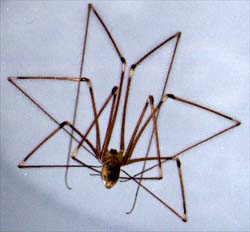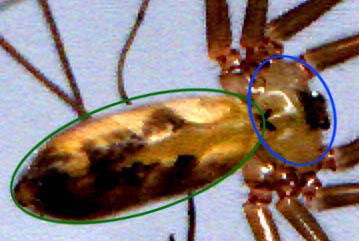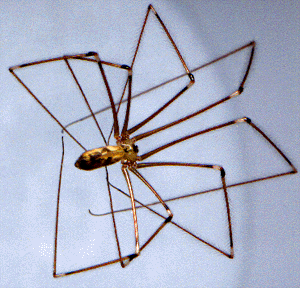

Purpose: Controversy has always surrounded the daddy long legs spider. Some wonder if it is in fact classified as a spider (arachnid) or if it is in fact an insect. This week, Scientific AmeriKen will hope to lay this debate to rest as the daddy long legs is put under the scope.

Hypothesis: The hypothesis of this experiment will be that the daddy long legs spider is in fact a spider. This reasoning behind this hypothesis is based solely on the name of the spider, even though there exist other names for species that are completely wrong in describing the species (i.e. in California there is a spanish moss which is neither from spain nor is a moss) , however, the hypothesis stands on the assumption that whoever named the spider had the knowledge of what a spider is.





Procedure: The general procedure of this experiment is to make general observations on the structures of the daddy long legs, and compare against known differences between spiders and insects.




 |
On the picture at left, it is observed that the
daddy long legs has two body segments. Outlined in green is the Abdomen
of the specimen, outlined in blue is the Cephalothorax. The Cephalothorax
is a body segment where the head and the thorax are fused together to form
one segment. Pictured below is an enlarged scan of the eyes of the spider.
|
||
 |
Judging by this picture on the left, it appears
as though the daddy long legs has a total of 8 legs.
Below is a picture of a spider and beside it the same picture however
ran through a couple of Adobe Photoshop graphic effects. Although this
provides no useful information, it does go to show the achievements of
wasted time.
|
Click
here to go to a printable version of this experiment
The current midi is "Song Without Words" by Xaver
Scharwenka. It can be found at The
Classical Midi Archives